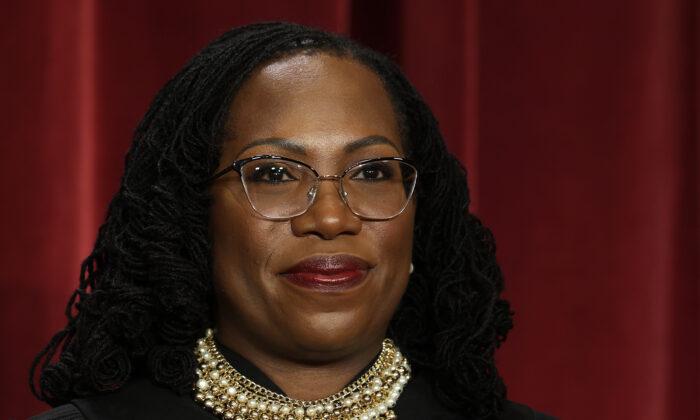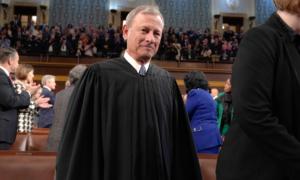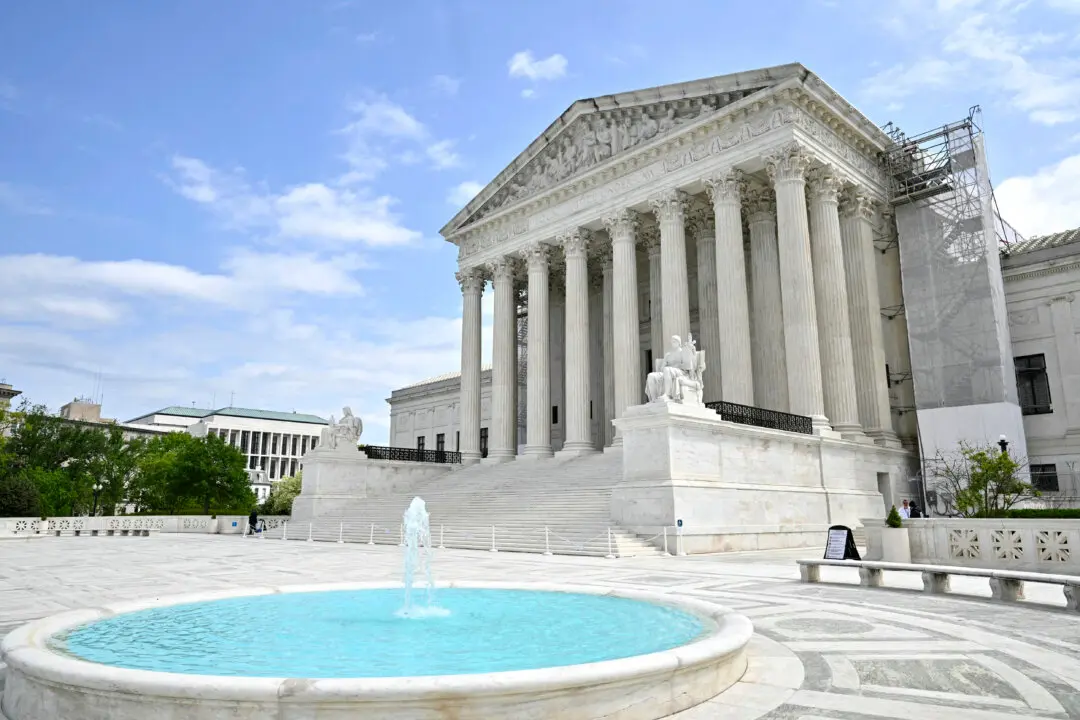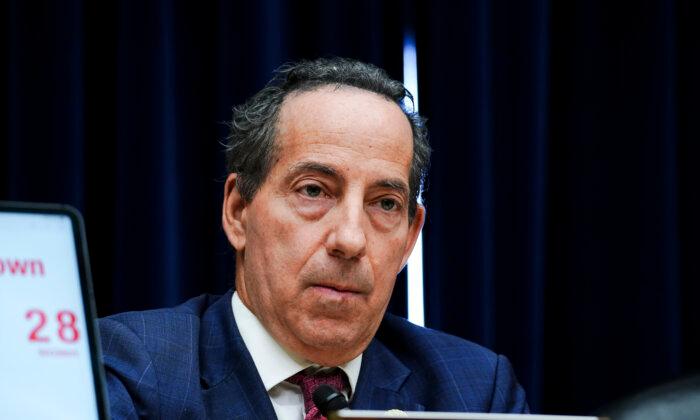The Supreme Court ruled 7-2 on April 16 that a veteran who was denied full education benefits is nonetheless entitled to receive education benefits under separate GI bills.
The case is about whether a veteran who qualifies for education benefits under multiple GI Bill programs is required to use up or abandon the benefits of one program to take advantage of benefits under another.
The decision, which is a defeat for the Biden administration, means as many as 1.7 million post-9/11 veterans could become eligible for additional education benefits potentially worth billions of dollars. The Biden administration disputes the 1.7 million figure, saying that it’s closer to just 30,000 veterans.
The nation’s highest court ruled that Mr. Rudisill may take the benefits in any order as long as he does not exceed the aggregate 48-month cap established by federal law.
Mr. Rudisill, an FBI special agent, is a decorated U.S. Army veteran who was wounded in Iraq in a roadside bomb attack in 2005.
The case centers on the Veteran Administration’s interpretation of administrative provisions of the Post-9/11 Veterans Educational Assistance Act, also known as the Post-9/11 GI Bill, which President George W. Bush signed into law on June 30, 2008.
The legislation expanded the GI Bill and made it “easier for our troops to transfer unused education benefits to their spouses and children,” President Bush said at the time.
“It will help us to recruit and reward the best military on the face of the Earth. It will help us to meet our responsibilities to those who support our troops every day—America’s great military families.”
The law was enacted to provide enhanced educational benefits that were more generous than the then-prevailing peacetime Montgomery GI Bill, a Korean War-era law that permits veterans to use benefits from any individual programs or a combination of them for up to 48 months. Congress approved the Post-9/11 measure in recognition of the difficult wartime service required of veterans since the Sept. 11, 2001, terrorist attacks.
After enlisting in 2000, Mr. Rudisill spent almost eight aggregate years in the Army over three separate tours, including service in Iraq and Afghanistan. After his discharge in 2002, he studied for an undergraduate degree using a portion of the 36 months of Montgomery benefits he had accumulated, according to his petition.
He enlisted a second time while in college and resumed his studies after receiving a second honorable discharge, using up about 25 1/2 months of Montgomery benefits, which left him with 10 1/2 months under that program.
Mr. Rudisill became an officer in the Army and served from 2007 to 2011. After a third honorable discharge, he began to work as an agent in the FBI’s domestic terrorism unit. He has also served since 2019 as an ensign in the Navy Reserve.
Mr. Rudisill wanted to serve a fourth time, this time as an Army chaplain, and was accepted by Yale Divinity School, believing that he could take advantage of Post-9/11 benefits earned during his second and third tours to cover the high cost of attending the school. He understood that he had earned 36 months of Post-9/11 benefits but that he could use only 22 1/2 months because he had previously used Montgomery benefits, which are subject to a cap.
Mr. Rudisill applied in 2015 to the VA for the Post-9/11 benefits, but instead of giving him the 22 1/2 months, the agency determined that he was entitled to only 10 1/2 months of Montgomery benefits because he hadn’t “completely exhausted” those benefits. The VA informed him that he had to forfeit the 10 1/2 months of Montgomery benefits for an equivalent amount of Post-9/11 benefits, even though his entitlement “to Post-9/11 benefits stems from periods of service that are separate and distinct from the period of service establishing his entitlement to Montgomery,” his petition states.
The VA wouldn’t allow Mr. Rudisill to claim his entire Post-9/11 entitlement, “subject to the 48-month aggregate cap based upon his prior usage, and required him to give up his remaining Montgomery entitlement if he wanted to receive Post-9/11 benefits before exhausting his Montgomery benefits, simply because he had first received some Montgomery benefits,” according to the petition.
Mr. Rudisill appealed to the Board of Veterans’ Appeals and lost. He appealed that adverse decision to the U.S. Court of Appeals for Veterans Claims and won. That court found that the law should be interpreted to allow him to receive benefits under both programs, subject to the prescribed cap.
The federal government appealed, and a three-judge panel of the U.S. Court of Appeals for the Federal Circuit sided with Mr. Rudisill. The government appealed again, and this time the full Federal Circuit ruled in favor of the VA.
Justice Jackson wrote that U.S. law permits individuals who have Montgomery benefits and who want to swap those benefits for Post-9/11 benefits may “coordinate” the entitlements. However, when veterans already possess separate entitlements and decide to take advantage of one after the other they are not actually coordinating anything, the justice wrote.
The justice wrote that because the Federal Circuit “incorrectly limited Rudisill’s benefits, we reverse its judgment and remand the case for further proceedings consistent with this opinion.”
Justice Clarence Thomas wrote a dissenting opinion, which was joined by Justice Samuel Alito.
Justice Thomas wrote that the educational benefits available under the Post-9/11 GI Bill are more generous than those in the Montgomery GI Bill, but sometimes veterans are entitled to benefits under both programs.
Federal law provides that veterans cannot receive benefits under both programs simultaneously, so Congress created “an election mechanism” that allows veterans to switch from Montgomery benefits to Post-9/11 benefits.
Under the mechanism, when a veteran switches to Post-9/11 benefits after using some, but not all, of his Montgomery benefits, the amount of his Post-9/11 benefits is limited to the number of months he had remaining for Montgomery benefits, the justice wrote.
Justice Thomas wrote that the court majority agrees that Mr. Rudisill could not avail himself of both benefits at the same time and that he moved over to Post-9/11 benefits while some of his Montgomery benefits remained. However, the majority declined to apply the statute’s limitation of his benefits because Mr. Rudisill was “separately entitled to Montgomery and Post-9/11 benefits due to his multiple periods of service.”
“Because this approach conflicts with the statute’s plain text, I respectfully dissent,” Justice Thomas wrote.
The justice wrote that in his view the Supreme Court’s majority “ignores the statutory mechanism that Congress created in favor of an interpretation that reaches a desired outcome.”







